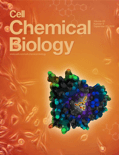
Cell Chemical Biology
metrics 2024
Exploring the Intersection of Chemistry and Biology.
Introduction
Cell Chemical Biology, published by Cell Press, stands at the forefront of interdisciplinary research in the realms of biochemistry, molecular biology, and pharmacology. With a robust impact factor evident in its prestigious Q1 quartile rankings across multiple categories including Clinical Biochemistry and Drug Discovery for 2023, this journal serves as a critical platform for disseminating cutting-edge scientific discoveries. As an Open Access publication, it ensures that vital research is accessible to a wide audience, fostering collaborations and driving innovation in the life sciences. Based in the United States, and featuring publications from 2016 to 2024, Cell Chemical Biology invites researchers, professionals, and students alike to contribute to its mission of advancing knowledge through rigorous peer-reviewed articles that address both fundamental and applied aspects of chemical biology.
Metrics 2024
 2.58
2.58 6.60
6.60 8.20
8.20 206
206Metrics History
Rank 2024
IF (Web Of Science)
JCI (Web Of Science)
Quartile History
Similar Journals

Chemical Biology Letters
Connecting Molecular Discoveries to Clinical ApplicationsChemical Biology Letters is a prominent academic journal dedicated to the evolving field of biochemistry and its applications in medical and clinical contexts. Published by ScienceIn Publications, this journal serves as a vital platform for researchers, professionals, and students alike, showcasing cutting-edge findings and innovations that drive forward our understanding of chemical interactions in biological systems. With its scope ranging from molecular biology to clinical biochemistry, Chemical Biology Letters is committed to advancing knowledge and fostering collaboration within the scientific community. Recognized for its quality, the journal is categorized in Q4 for Biochemistry and Molecular Biology fields, while achieving notably higher ranks in Medical Biochemistry, reflecting its significant contributions to the discipline. Aiming to remain accessible to a diverse audience, the journal is published in open access format, inviting researchers worldwide to explore and share invaluable insights. Established in 2014, it continues to grow in impact and relevance, paving the way for advancements in both theoretical and applied research within the realm of chemical biology.
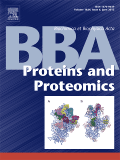
BIOCHIMICA ET BIOPHYSICA ACTA-PROTEINS AND PROTEOMICS
Catalyzing Innovations in Protein ResearchBIOCHIMICA ET BIOPHYSICA ACTA-PROTEINS AND PROTEOMICS, published by Elsevier, is a prestigious academic journal that serves as a vital resource for researchers, professionals, and students in the fields of biochemistry, biophysics, and proteomics. With an ISSN of 1570-9639 and an E-ISSN of 1878-1454, this journal features high-impact research articles aimed at advancing our understanding of protein structure, function, and interactions, contributing significantly to both theoretical and applied sciences. Recognized for its quality, it proudly holds a Q1 ranking in Analytical Chemistry and Biophysics, and Q2 in Biochemistry for 2023, alongside notable Scopus rankings that reflect its influence in the realm of molecular biology. The journal's commitment to disseminating essential findings supports the ongoing evolution of proteomic sciences and encourages collaborative discourse among the global scientific community. For aspiring authors, the journal offers open access options, enabling broad visibility of their work. Join the conversation in this dynamic field and contribute to shaping the future of protein research!

Cell Regeneration
Innovating Tomorrow's Therapies through Cell ScienceCell Regeneration, published by SPRINGERNATURE, stands at the forefront of biological research, focusing on the dynamic field of cellular development and regenerative biology. Since its establishment in 2012, this journal has embraced an Open Access model, facilitating widespread dissemination of key findings and fostering collaboration among researchers in the Netherlands and beyond. With an impact factor underscoring its significance, Cell Regeneration is positioned in the Q2 category in both Cell Biology and Developmental Biology as of 2023, ranked #32 out of 82 and #170 out of 285 in relevant Scopus peer fields. The journal encompasses a broad spectrum of research that advances our understanding of cellular processes, offering vital insights into regenerative mechanisms and their applications in therapies. This robust platform not only serves as a valuable resource for researchers, professionals, and students but also encourages scholarly dialogue and innovation in the fast-evolving landscape of cell biology.
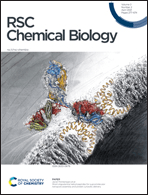
RSC Chemical Biology
Fostering Innovations at the Intersection of Chemistry and BiologyRSC Chemical Biology is a prestigious journal published by the Royal Society of Chemistry, providing a significant platform for researchers in the fields of biochemistry, genetics, and molecular biology. Launched in 2020, the journal aims to disseminate high-quality research that bridges the gap between chemistry and biology, promoting interdisciplinary studies and innovations that are essential for advancements in life sciences. With an emerging impact factor and ranking in the top quartile (Q1) for multiple categories such as Biochemistry and Molecular Biology, RSC Chemical Biology holds a prominent position in the academic landscape, evidenced by its Scopus rankings placing it in the top 20% and 30% of its respective fields. Although it does not operate under an open-access model, the journal's commitment to accessibility is reflected in its rigorous peer-review process and its role in shaping future scientific discourse. Research published in this journal is vital for contributing to our understanding of complex biological processes and fostering innovations that can lead to real-world applications.
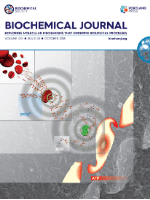
BIOCHEMICAL JOURNAL
Empowering Researchers with Cutting-Edge InsightsBIOCHEMICAL JOURNAL, published by Portland Press Ltd, stands as a leading publication in the fields of Biochemistry, Cell Biology, and Molecular Biology, reflecting a commitment to advancing scientific knowledge since its inception in 1945. With a distinguished Q1 ranking across these categories and impressive Scopus rankings, the journal serves as an invaluable resource for researchers, professionals, and students alike, facilitating critical discoveries and innovative research practices. Although not currently offering open access, the journal provides a platform for high-quality peer-reviewed articles, ensuring rigorous standards in the dissemination of biochemical research. Spanning over seven decades and continuing through to 2024, the BIOCHEMICAL JOURNAL fosters an environment where cutting-edge biochemical research thrives, supporting the global scientific community's efforts to address complex biological questions and enhance our understanding of fundamental cellular processes.

Biology Direct
Exploring the vast landscape of life sciences research.Biology Direct is a leading open-access journal published by BMC, dedicated to disseminating groundbreaking research in the fields of biological sciences. Since its inception in 2006, the journal has emerged as a pivotal platform for scholars, researchers, and practitioners, providing unrestricted access to high-quality, peer-reviewed articles that cover a wide spectrum of topics, including biochemistry, ecology, and applied mathematics. With an impressive ranking in the first quartile across multiple scientific categories, including Agricultural and Biological Sciences and Biochemistry, Genetics, and Molecular Biology, Biology Direct is recognized for its rigorous standards and impactful contributions within the academic community. The journal's open-access model ensures that research findings reach a global audience, fostering collaboration and innovation. Researchers and students looking to stay ahead in the rapidly evolving biological sciences will find Biology Direct an invaluable resource for knowledge and insight.

CURRENT OPINION IN CHEMICAL BIOLOGY
Championing Excellence in Chemical BiologyCurrent Opinion in Chemical Biology, published by Elsevier Science Ltd, stands at the forefront of its field, specializing in analytical chemistry and biochemistry. With an impressive impact factor and ranked in the top quartile (Q1) for both its disciplines, this journal consolidates significant advancements and perspectives in chemical biology from 1997 to 2024. Its Scopus rankings reflect its prestigious standing, with the journal positioned at #11 in Analytical Chemistry and #32 in Biochemistry, indicating a remarkable percentile standing of 93rd and 92nd, respectively. With a commitment to highlight cutting-edge research and foster scholarly dialogue, Current Opinion in Chemical Biology serves as an invaluable resource for researchers, professionals, and students seeking to stay abreast of the latest developments and innovations in the chemical biology landscape.
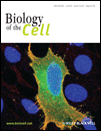
BIOLOGY OF THE CELL
Unveiling the secrets of life, one cell at a time.BIOLOGY OF THE CELL is a prominent academic journal published by Wiley, dedicated to advancing the field of cellular biology through the dissemination of innovative research and insights. With its ISSN (0248-4900) and E-ISSN (1768-322X), this journal has been a vital resource since its inception in 1981 and is set to continue its scholarly contributions until 2024. Positioned within the Q3 quartile in Cell Biology and Q2 in Medicine (miscellaneous) as of 2023, BIOLOGY OF THE CELL is recognized for its rigorous peer-review process and its commitment to high-quality publication in critical areas such as biochemistry, genetics, and molecular biology. Although the journal does not currently offer open access options, it remains accessible through the Wiley platform, ensuring that researchers, professionals, and students can benefit from its rich repository of knowledge. By linking fundamental cellular processes with broader medical implications, this journal serves as a critical platform for fostering dialogue and innovation in cellular research, making it an essential read for anyone engaged in the life sciences.

BIOCELL
Innovative Insights into Cellular MechanismsBIOCELL is a distinguished peer-reviewed journal dedicated to the field of Cell Biology, published by TECH SCIENCE PRESS. Since its inception in 1995, the journal has been at the forefront of disseminating innovative research, with converged publication years extending from 1995 to 2013 and from 2015 to 2024. Although it currently holds a Q4 ranking in the Cell Biology category according to the 2023 category quartiles, BIOCELL aims to foster advancements by providing a platform for researchers, professionals, and students to share their findings in biochemistry, genetics, and molecular biology. The journal is available in both print (ISSN: 0327-9545) and digital formats (E-ISSN: 1667-5746) and seeks to attract contributions that enhance scholarly dialogue and understandings of cellular mechanisms and innovations. With a commitment to quality research and critical discourse, BIOCELL plays an important role in nurturing the scientific community within Argentina and beyond, offering vital insights that contribute to the advancement of the life sciences.
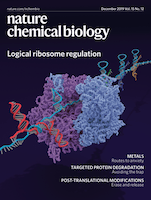
Nature Chemical Biology
Connecting Chemistry and Biology for Groundbreaking Discoveries.Nature Chemical Biology is a prestigious academic journal published by NATURE PORTFOLIO, specializing in the interdisciplinary field of chemical biology. With an impressive impact factor and consistently ranked in the Q1 category for both Cell Biology and Molecular Biology, this journal serves as a vital platform for disseminating groundbreaking research and innovative methodologies. Covering a broad spectrum of topics that integrate the principles of chemistry and biology, it is particularly essential for researchers and professionals dedicated to understanding the molecular mechanisms of life. The journal is renowned for its rigorous peer-review process and high visibility, which contribute to its ranking of 14th in Molecular Biology and 17th in Cell Biology according to Scopus, placing it in the top percentiles of its fields. While open access options are limited, the journal remains a critical resource for students and academics striving to stay at the forefront of chemical biology research, from its inception in 2005 through to its convergence in 2024. By facilitating the exchange of knowledge and ideas, Nature Chemical Biology continues to shape the future of science and innovation.